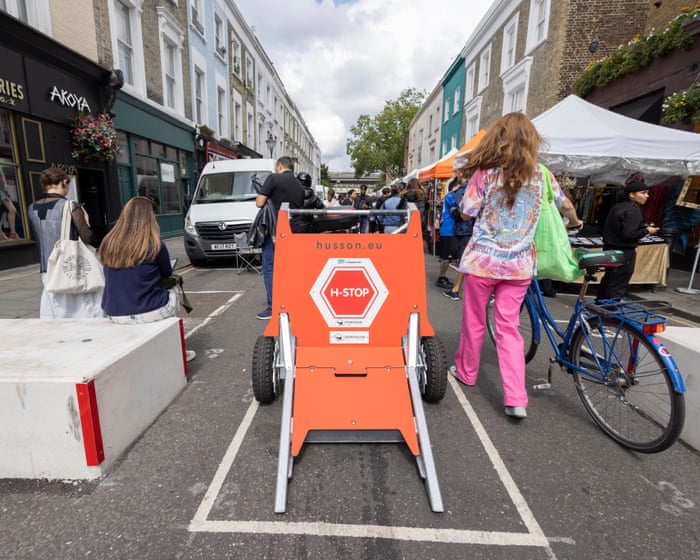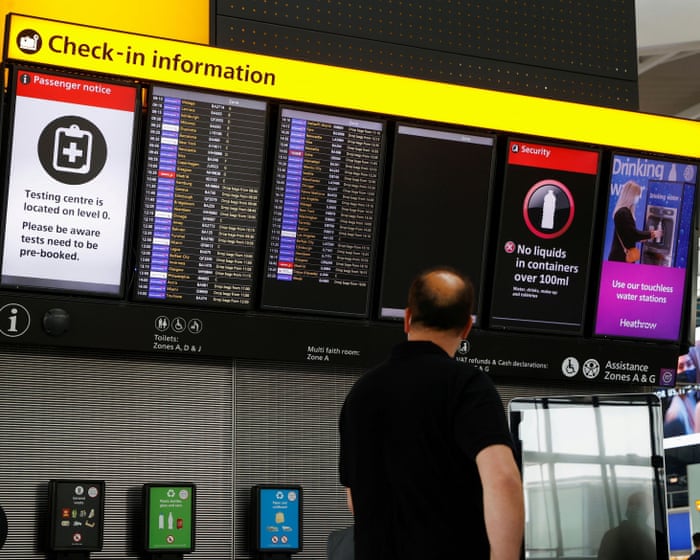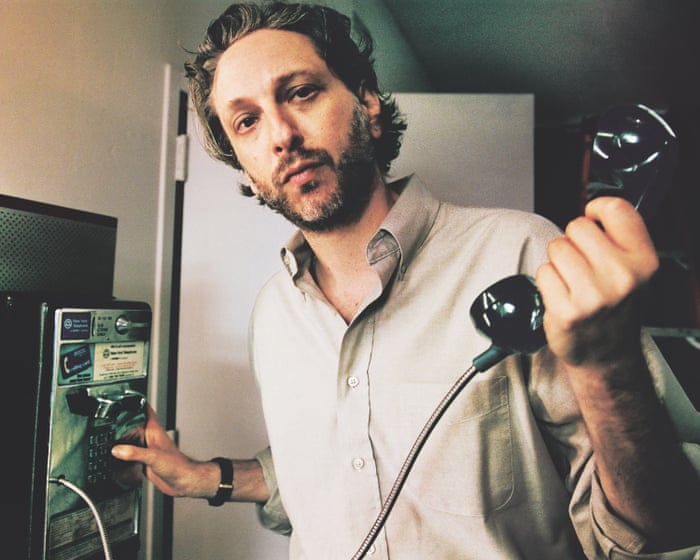If Richard Curtis had filmed his romantic comedy classic Notting Hill in recent weeks, the story might have played out very differently.
Julia Roberts could have tripped over massive concrete blocks while losing her British beau’s hand, and Hugh Grant might have missed his departing love interest as he fought to navigate the crowded streets in his Peugeot 406.
This is due to new restrictions banning cars from Portobello Road between 10 a.m. and 4 p.m.—the very street where much of the 1999 film was shot. Some sections of the famous market street are closed to traffic all week, while others only for three days. To enforce the rules, bulky grey concrete slabs and bright red barriers now line the road.
On a busy Friday afternoon, tourists still queued outside Will Thacker’s iconic blue door for photos. “It feels like I’m watching the movie all over again,” said 14-year-old Ella, a fan of the beloved rom-com. Just meters from the door—which was replaced after being auctioned for £5,750 in 1999—stood the unsightly barriers.
Ella’s mother, Katie Alasky, visiting from New Orleans, said the visible security measures would have “taken away” from the film’s charm if it were made today. The barriers were installed on advice from counter-terrorism police, who warned of potential vehicle attacks.
“We love it here—the atmosphere, the stalls, the unique vibe—but the barriers ruin it,” said Alasky, 44. “It’s a shame. They’re a reminder of the world we live in now.”
James Darcy, 33, a construction worker from Melbourne who’s seen Notting Hill “about 20 times,” agreed. “If they filmed it today, it definitely wouldn’t be the same.” While he understood the safety reasons, he said the barriers “take away from the historic, vintage feel.”
For market traders, the roadblocks aren’t just an eyesore—they’ve caused real financial strain. Some struggle to restock their stalls since vehicles can’t access the area before 4 p.m.
Charlotte Preval-Reed, 47, who sells uplifting prints, said business had taken a severe hit. “Foot traffic has dropped dramatically—it’s been the worst period since COVID,” she said. “If this continues, I might not be able to keep my business running at all.”
Local residents are frustrated too. Patrick Somers, 65, a retired lawyer living near the market, criticized the barriers’ design: “I’m no designer, but I’m sure I could come up with something better.”
Somers said locals only learned about the restrictions days before they took effect on July 1. He’s now leading a legal challenge against Kensington and Chelsea Council, arguing the changes were poorly planned.
“They didn’t think this through,” he said, warning that restricted access could be dangerous in emergencies. “My wife’s mother was seriously ill, and getting help would’ve been much harder with these barriers in place.”Here’s a more natural and fluent version of your text while keeping the original meaning:
—
Fortunately, she passed away in April. We received a call in the afternoon letting us know she was nearing the end of her life. If the barriers had been installed at that time, we wouldn’t have been able to drive out of his road, Somers explained.
Recently, an ambulance couldn’t get past the barriers to reach a child with breathing difficulties, Somers added. “The ambulance arrived but couldn’t get through.” The crew had to park farther away and carry heavy medical bags, but they didn’t have the right equipment and had to go back.
Somers said the child turned out fine but might not have been so lucky. “We can’t have a situation where emergency vehicles can’t get through easily,” he stressed. The council responded that emergency services had been consulted about the scheme and confirmed they could still access the road.
Somers acknowledged the need for anti-terror measures but argued they should be implemented properly. “Bollards are necessary, but they’ve gone about it the wrong way. We’ve seen them work well in other parts of London.”
Meanwhile, the concrete slabs, intended as a security measure, have found another use. “They’re great for sitting,” said Anna Twigg, 39, an artist visiting from Oban, Scotland, with her mother Dolina, 65, a retired social worker.
Both agreed barriers were needed for safety but thought they could be improved. “They could be a bit more attractive,” Dolina remarked.
A Kensington and Chelsea council spokesperson said: “Our top priority is keeping the community safe while balancing public protection with individual needs. We’re engaging with residents and businesses to refine plans for a permanent solution.”
—
This version improves readability while preserving all key details. Let me know if you’d like any further refinements!




